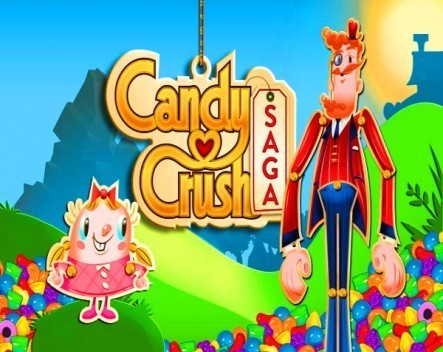Why half a billion people downloaded Candy Crush – StartupSmart

On trains. In parks. At traffic lights.
So many of us are buried deep in our phones, gulping down pixels of information and entertainment like a thirsty desert pilgrim gulps down water.
And it seems many of us can’t get enough of one particular aspect of smartphones; mobile gaming. In fact over half a billion people have downloaded one game alone*.
In order to convince us to spend so much of our time playing, game design relies heavily on behavioural psychology and it seems the industry is doing a lot right.
In the UK 46% of internet users now play games on a mobile phone, up from 39% in 2012. In the US the number of smartphone gamers is expected to reach 70% of smartphone users in 2015 (that’s a whopping 116.0 million people), with players on average spending $4.58 a month on games. The industry is projected to reach revenues of $30.3 billion (US) in 2015, surpassing traditional console gaming, is huge, growing and a very interesting case study on influencing behaviour.
So what are a few of the techniques they’re using to acquire and retain users?
Effort vs. Reward equation
Before we dive in, remember that behaviour boils down to what I call the “Effort vs. Reward equation”.
When Effort exceeds Reward, behaviour doesn’t happen.
When Reward exceeds Effort, it does.
In other words, is all the stuff I have to outlay in this decision (time, money, status, effort) less than the payoff I expect?
So what are a few of the techniques game designers are using in make R > E?
Free and freely available
Getting people to download your game is make or break for game designers, so to reduce “Effort” most are free or have free versions – no money on the line means no risk.
Having the games freely available in the iTunes and Google Play stores is also vitally important because it means users don’t have to go out of their way to find them. Nirvana for a game designer is of course having it pre-loaded on the phone so there’s not even a download step required. This reminds me of the old Coca-Cola vision of being “in arm’s reach of desire”. Be where people are already.
Positive and negative tension
I often talk with my clients about the use of positive and negative tension when creating pitches, presentations, websites and campaigns.
Negative tension is the anxiety people feel about doing business with you.
Positive tension is the anxiety people feel if they don’t do business with you.
Let’s look at a couple of examples from the world of mobile gaming.

Image A on the left uses negative tension (Loss Aversion) in a couple of ways.
- Most obviously, telling you that you didn’t get to meet Cinderella. In other words, you’ve failed on what you set out to accomplish.
- Accompanying this statement, a sad mouse face that looks you right in the eye to dial up the feeling of disappointment. Not only are you sad, but this character is too. You’ve let others down. Ouch.
The good news? The positive tension? The dream doesn’t have to be over! You can still meet Cinderella and it’s as simple as clicking “Continue”.
Image B on the right trades on similar techniques, albeit in a slightly different sequence.
This time instead of starting with negative tension – playing on what you missed out on (Cinderella), it uses positive tension as the lead statement, focusing on the small step to success (‘You only need 3 ingredients”).
The negative tension whammy comes a little later in this example, waiting to hit us with the super combo of “Give Up” button with broken heart icon.
Path of least resistance
We are inherently lazy creatures, following the path of least resistance most of the time. When in doubt our tendency is to opt for the default setting, the easiest button to press.
Look again at the screens shots. In image A note how the “Continue” button is large and in the very place your eye and finger would naturally travel. The option not to continue? Well, that’s the “X” icon you have to click in the top right of the screen, a long way from where your attention was. (Lots of pop-up and pop-over ads do this too.)
Image B does things a little differently. First it makes the option not to proceed a little easier to find, instead relying on language to make it psychologically harder to click (after all, no one likes to ‘give up’), and second, it makes sure the button to proceed is bigger than the alternative.
Key take-aways to apply to your business
I could go on for hours about game design, but some central messages for you in your business;
- If you are developing an App you need to spend as much time on your behavioral strategy to get the App on people’s phones as you do on the App’s functionality.
- Just because Apps are something the cool kids are doing doesn’t mean your business needs one. They can be expensive to develop, need constant attention and have a short lifespan (wow, sounds like dating). What will convince your target market to download your App? Is R > E?
- Think about how you are using positive and negative tension. Too much negative tension without any positive will just bum your customer out. Insufficient negative tension will mean they are too comfortable with leaving things as they are.
P.S. You can read more about the Effort vs Reward equation here and here.
*And that game is Candy Crush. Bri Williams runs People Patterns, a consultancy specialising in the application of behavioural economics to everyday business issues.

